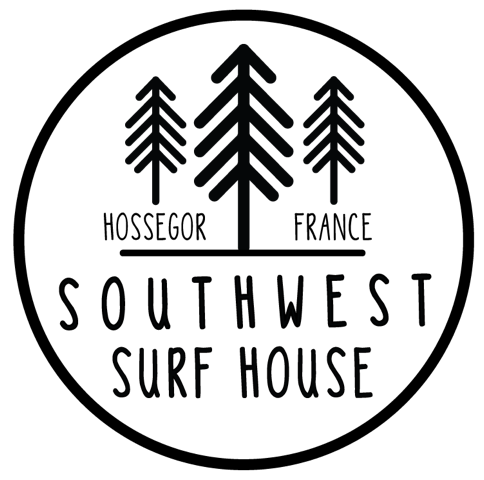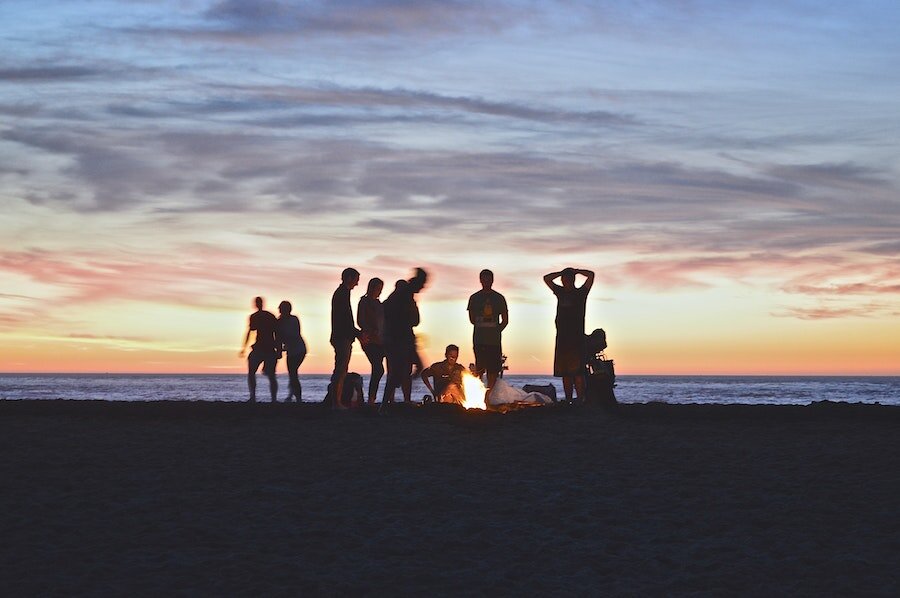Is there a best age to start surfing? In this article, the team here at Southwest Surf House answer this question, bust some common myths about learning to surf as an adult and provide helpful tips on learning to surf in your teens, 20s, 30s and up!
If you’ve ever wondered whether you’re too old to start surfing, we’ve got some great news. You’re never too old to surf, nor are you ever too old to learn to surf.
In fact, the vast majority of our guests are in their 20s and 30s. We even have a few who are in their late teens. Really, the only prerequisites for learning to surf are determination and proper guidance. We’ve even heard stories about people learning to surf well into their 60s and 70s.
But we don’t suggest you wait that long. After all, it’s difficult to look good in a wetsuit as a grandma or grandpa. Besides, the best age to start surfing is relative. Like we said, as long as you’re motivated and willing to learn, you can become a shred king or queen no matter how old you are.
So, instead of always saying that you’ll learn to surf “someday soon”, check out the following article and book a stay with us.
Learning to surf as a kid vs. learning to surf as an adult
Many people will tell you that learning to surf as a kid is easier, just like they’ll tell you that children pick up second languages faster. The truth is though that while kids may learn incredibly quickly, there is a way for adults to emulate their style of learning in order to pick up surfing faster.
This hack is based on the idea that your mind as a kid is way more mouldable than your mind as an adult. Without going to heavy on the science, the reason for this is that the prefrontal cortex of the brain (where working memory is stored) is more developed in adults than in children. Or, to put it more simply, grommets are more open-minded when it comes to learning something new.
Therefore, in order to tap into your inner kid and pick up surfing in a flash, you should try to approach your learn to surf experience with the following tips in mind:
· Pay attention to the details
· Allow yourself to be curious and ask questions
· See each mistake as an opportunity to learn
· Absorb any online surf coaching videos that you can find
· Talk to other people about your learn to surf experience
· Don’t be afraid to be hands-on
· Remember that it’s all for fun
Common myths about learning to surf when you’re older
As we just touched on, people love to say that learning to surf as an adult is hard. And let’s be honest, it ain’t no walk in the park. But based on our experience, there is no best age to start surfing. As long as you have the right attitude, there’s hope.
The problem is that many people fall into the trap of believing things about learning to surf that simply aren’t true. Some of the most common myths about learning to surf when you’re older are as follows.
There’s an age limit to surfing
Guys… we want to be clear about this. You’re not too old to start surfing. Seriously, no one is going to ask for an ID when you enter the lineup and you don’t have to be this tall to ride a wave. There’s no age limit to surfing and it doesn’t matter if you begin as a 19, 25 or 35-year-old. We’ll be here waiting for you with wetsuits, surfboards and waves ready to go :)
You need to be fit
The myth that you need to be fit to be a surfer has been perpetuated since time immemorial.
This is mainly due to the fact that up until about 20 years ago, surfboards were not particularly user-friendly. Narrow from nose to tail, thin in the rails and about as buoyant as a brick, it definitely required a decent level of fitness simply to keep them afloat.
These days, surfboards are designed in a range of different sizes to compensate for different skill levels. Subsequently, surfing has become more accessible than ever, which ensures that everyone can jump on a board and learn to surf no matter their physical ability.
You must own your own gear
Another common fallacy when it comes to the learn to surf experience is that you need your own gear in order to start.
But surfboards, wetsuits and fins are expensive. Not to mention other accessories such as legropes, traction pads and wax… the latter of which always seems to go missing when you most need it. In any case, what we’re saying is that buying your own gear is a costly investment.
The good news here is that there’s a way around this – book a stay at Southwest Surf House and get access to a massive selection of quality surfboards and wetsuits. You’ll save money on buying your own gear and have the luxury of being able to choose from different items. And don’t worry… we’ll make sure you look like a real surfer, which is nearly just as important as learning how to stand up.
5 tips for learning to surf at 20 and beyond
Now that we’ve discussed a few common myths about learning to surf as an adult plus a simple hack for fast tracking your surfing success, here’s some additional advice for learning to surf at 20 and beyond. Take note, budding surf frothers and frothettes. These tips will take you from the whitewash to a green wave in no time at all.
Start with a surf lesson
In order to learn anything, it’s important to start with the fundamentals. When it comes to surfing, however, there’s more to becoming the next Slater or Gilmore than just learning how to stand up on a piece of floating foam.
Assuming you’re not well acquainted with the ocean, you’ll also need to learn a few vital things about the big blue body of water you’re about to enter. Namely, how waves break, the risks posed by rips and shorebreaks plus the big one – surf etiquette.
A surf lesson with our mates and partners down at Billabong Surf School is where you can learn all of these things. Most of all though, you’ll learn that there’s no best age to start surfing.
Immerse yourself in the surf culture
The origins of surfing are somewhat murky. Some say it started with Peruvian fisherman and their reed rafts some 4,000 years ago while others contend that Polynesians of the 12th century were the first to ride waves on timber surfboards.
In any case, what we’re trying to say here is that surfing has been around for hundreds if not thousands of years. This has given rise to a rich and diverse surf culture, which is made up of said history plus the many modern ideas, customs and behaviours that make surfing what it is today.
For those who think they’re too old to start surfing, immersing yourself in the many magazines, books and movies about surfing is one tip for discovering more about this pastime whilst also fuelling your passion for this epic activity.
Get comfortable in the ocean
The ocean is beautiful, wild and mysterious. These are just some of the reasons why we love it so much. But like all elements of Mother Nature, it can also be incredibly unpredictable.
This unpredictably may make you feel nervous or uneasy about entering the water as a 20, 30 or even 40-year-old beginner surfer. But don’t worry… after enough sessions under the careful watch of the attentive surf teachers at Billabong Surf School, you’ll feel yourself becoming more and more comfortable in the ocean.
The result of you feeling more comfortable is that your apprehension will be replaced by pure joy, or as we call it, stoke. This emotion is something that’s hard to describe, but upon riding your first wave or catching a set all the way to shore, you’ll know exactly what stoke feels like.
Be OK with looking like a total beginner
It’s perfectly normal to be self-conscious about looking like a total beginner when surfing for the first time. What you need to remember though is that everyone who’s ever learned to surf was in the same boat as you at one point.
What’s more, the very fact you’re learning such an adventurous new activity should in itself make you feel proud of your efforts, not embarrassed. There are many, many people who say they want to learn to surf, but not many who are actually brave enough to do it. You fall into the latter category and for that we reckon you deserve some massive kudos.
Improve your flexibility
Finally, another tip for learning to surf at 20 and beyond is to improve your flexibility.
This doesn’t mean that you need to go on a yoga retreat or engage a personal trainer before you book with us. What it does mean is that the odd leg, back or shoulder stretch shouldn’t be neglected. They will keep you feeling light and limber. This will, in turn, better prepare for the unique movements of surfing.
Fortunately, we offer yoga lessons for this reason and for those who want to maintain an established yoga routine even while on vacation.
There you have it…There’s no age limit for learning to surf – contact us today to book a surf trip to Hossegor!






